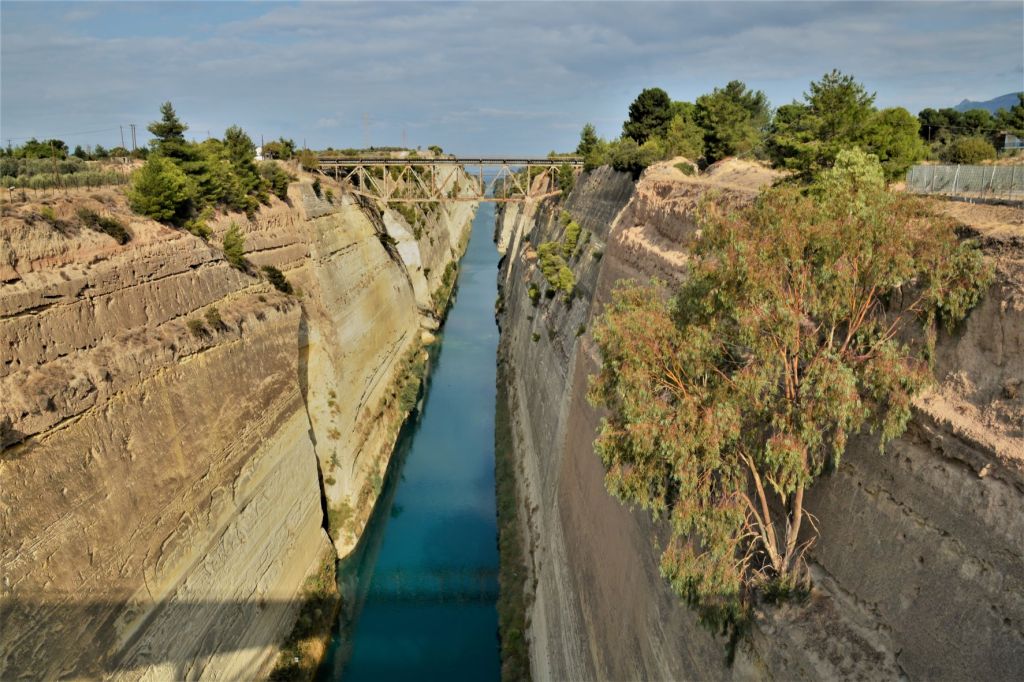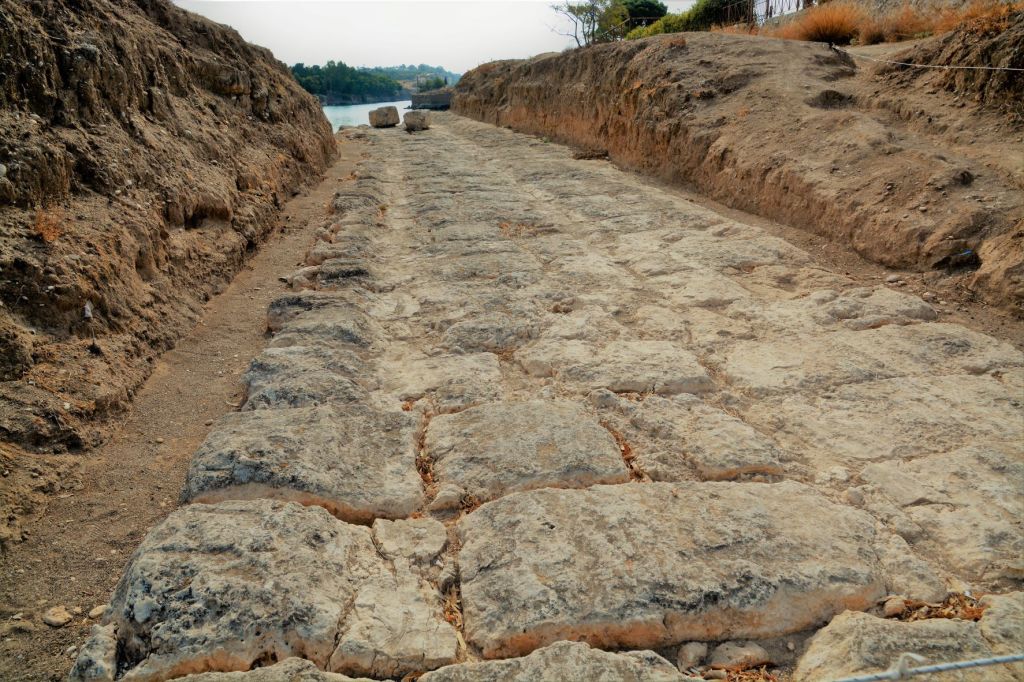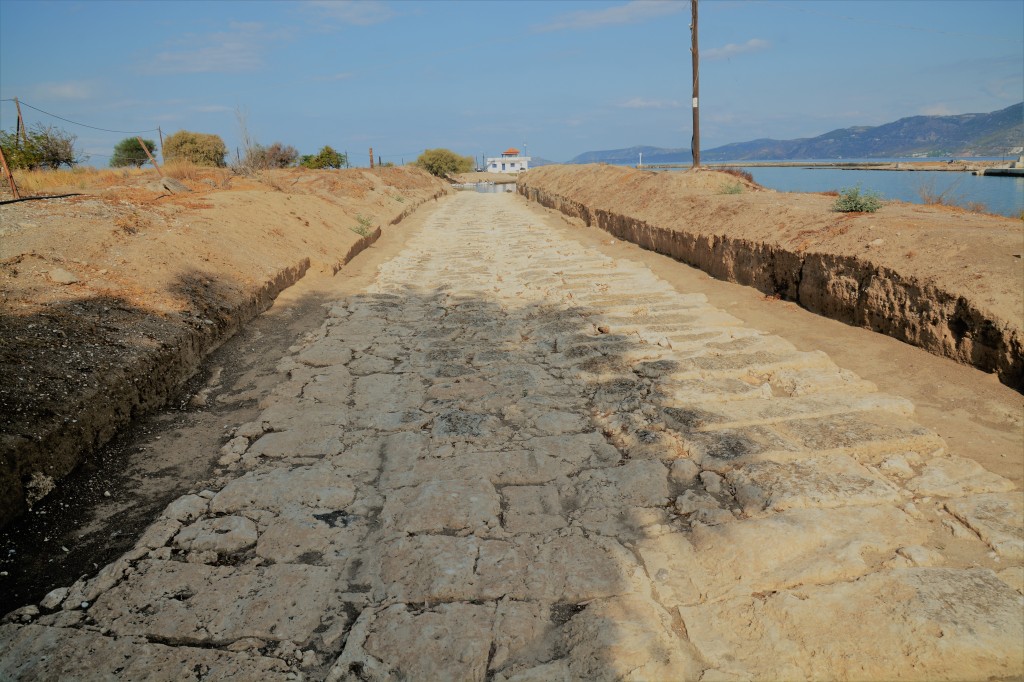On our way to the archaeological site of Corinth our group made a couple of very important stops. The first was to see the Corinth Canal.
The narrowest point of the isthmus of Corinth is only 4 miles wide. A canal was engineered and completed between 1882 and 1893. Nero (A.D. 67) had the idea of building a canal at that exact route utilized by the modern engineers. He planned to use 6,000 Jewish prisoners as his work force, but the idea was abandoned.

The canal cuts through the Isthmus of Corinth, separating the Peloponnesian peninsula from the Greek mainland. It connects the Gulf of Corinth with the Aegean Sea. On the site is a sign with info:

In ancient times there was a paved road that stretched across the isthmus, called the diolkos, which enabled cargo and smaller ships to be hauled overland, thus avoiding the dangerous circumnavigation of the Peloponnese.
Our photos below show two remaining portions of the western end of the diolkos. Photos are on the south side of the canal.

The BAS has this information re: this site in their collection, The Biblical World in Pictures commenting on their photo taken in the same area as mine above:
In Paul’s day a stone-paved sledway, called the Diolkos, was used to haul ships and their cargoes across the isthmus. At both ends of the road the pavement continued down beneath the waterline, allowing the shallow-draft ships to be floated onto and off of the sleds. The sleds were then pulled out of the water and across the isthmus by mule-power.
This view of the Diolkos is near the western end, looking beyond to the Gulf of Corinth (and the mountains along its northern coast sheltering the oracle shrine of Apollo at Delphi). At the right can be seen the western outlet of the modern canal. The stone pavement of the Diolkos clearly shows the ruts formed by sled runners over centuries of use. Corinth, of course, controlled the Diolkos traffic. Moreover, since ship crews and passengers using this route had to leave their vessels temporarily at Corinth anyway, they had less reason to make an additional port-call at Athens’ harbor on the Piraeus. Thus, many more travelers of the Roman era passed through Corinth than through Athens.
The diolkos was paved with hard limestone.

Click on image for larger view.
